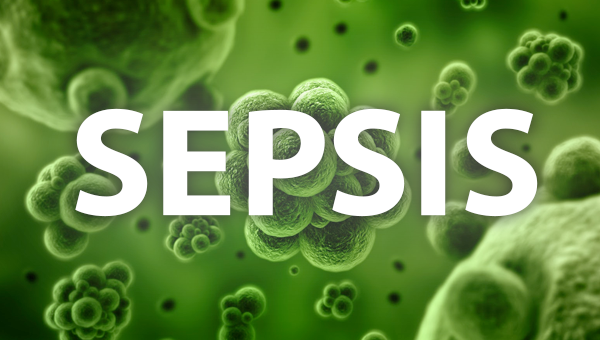Sepsis is a serious medical condition resulting from an infection. As part of the body’s inflammatory response to fight infection, chemicals are released into the bloodstream. These chemicals can cause blood vessels to leak and clot, meaning organs like the kidneys, lung, and heart will not get enough oxygen. The blood clots can also decrease blood flow to the legs and arms leading to gangrene.
There are three stages of sepsis: sepsis, severe sepsis, and ultimately septic shock. In the United States, there are more than one million cases with more than 258,000 deaths per year. More people die from sepsis each year than the combined deaths from prostate cancer, breast cancer, and HIV. More than 50 percent of people who develop the most severe form—septic shock—die. Septic shock is a life-threatening condition that happens when your blood pressure drops to a dangerously low level after an infection.
Who is at risk?
Anyone can get sepsis, but the elderly, infants, and people with weakened immune systems or chronic illnesses are most at risk. People in healthcare settings after surgery or with invasive central intravenous lines and urinary catheters are also at risk. Any type of infection can lead to sepsis, but sepsis is most often associated with pneumonia, abdominal infections, or kidney infections.
What are signs and symptoms of sepsis?
The initial symptoms of the first stage of sepsis are:
- A temperature greater than 101°F or less than 96.8°F
- A rapid heart rate faster than 90 beats per minute
- A rapid respiratory rate faster than 20 breaths per minute
- A change in mental status
Additional symptoms may include:
- Shivering, paleness, or shortness of breath
- Confusion or difficulty waking up
- Extreme pain (described as “worst pain ever”)
Two or more of the symptoms suggest that someone is becoming septic and needs immediate medical attention. In the second stage (severe sepsis), the person has less urine output, has a worse mental status, increased trouble breathing, an abnormal heart beat, and abdominal pain. These are all indications that the vital organs are suffering, and without treatment the person may have a severe drop in blood pressure and deteriorate into septic shock.
Doctors can diagnose sepsis through blood tests and cultures of the body part where the infection is. Certain other tests like x-rays, CT scan, or MRIs help to determine the site of the infection. Early diagnosis and treatment are essential to prevent septic shock and further complications.
Persons suffering from sepsis will be treated with antibiotics, intravenous fluids, and medicine to increase the blood pressure. The person may also need surgery to remove the infected body parts.
What can you do?
You can prevent sepsis by getting vaccinated. Keep wounds and cuts clean and do not pick at them. If you have an infection, be alert for the symptoms noted above. If you’ve had surgery recently, be particularly alert to these symptoms. Seek medical attention immediately.
Additional resources
Sepsis–Centers for Disease Control and Prevention
Sepsis fact sheet–National Institute of General Medicine Services










